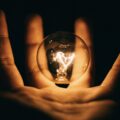This combined 25-27th installment in an ongoing series of updates from Harvard Astronomer Avi Loeb, head of The Galileo Project, documents the team’s expedition to attempt the recovery of an interstellar object from the floor of the Pacific Ocean. This entry covers Day 13 (June 24, 2023) and Day 14 (June 25, 2023) of the team’s expedition.
Diary of an Interstellar Voyage, Report 25 (June 24, 2023)
A rainbow appeared above Silver Star’s deck after the expedition team retrieved the harvest of Run 13, which included the biggest spherule so far with an enhanced abundance of rare elements, often used in semiconductors.
It occurred to me that perhaps I was not clear enough in my preceding 24 diary reports on the expedition to retrieve the remains of the first recognized interstellar meteor, IM1. So let me state the obvious at the top of this 25th report.
The Interstellar Expedition story is about new evidence regarding interstellar objects and not about opinions. That people tend to express an opinion about the unknown before evidence is gathered poses an unfortunate impediment to the growth of our scientific knowledge. I was told that a scientist not involved in our expedition will discuss the expedition at a conference next week. This misses the point that new scientific knowledge is advanced by those who know the evidence and not by those who ruminate on past knowledge.
So what is the evidence collected thus far from the Interstellar Expedition? Run 8 dominated the spherule count by an order of magnitude relative to all other runs, and its line skimmed the upper envelope of the likely interstellar meteor (IM1) path. Most other lines, including those in control areas, did not find spherules larger than 300 microns. The early part of Run 8 overlapped with Run 5, which showed spherules of smaller characteristic sizes. This is consistent with the smaller spherules falling closer to the fireball site as a result of their enhanced friction on air. The composition of the spherules deviates from those of known meteors from the solar system, including iron meteorites. Some of the anomalously abundant elements in IM1’s largest spherules are commonly used in electric circuitry and semiconductors.
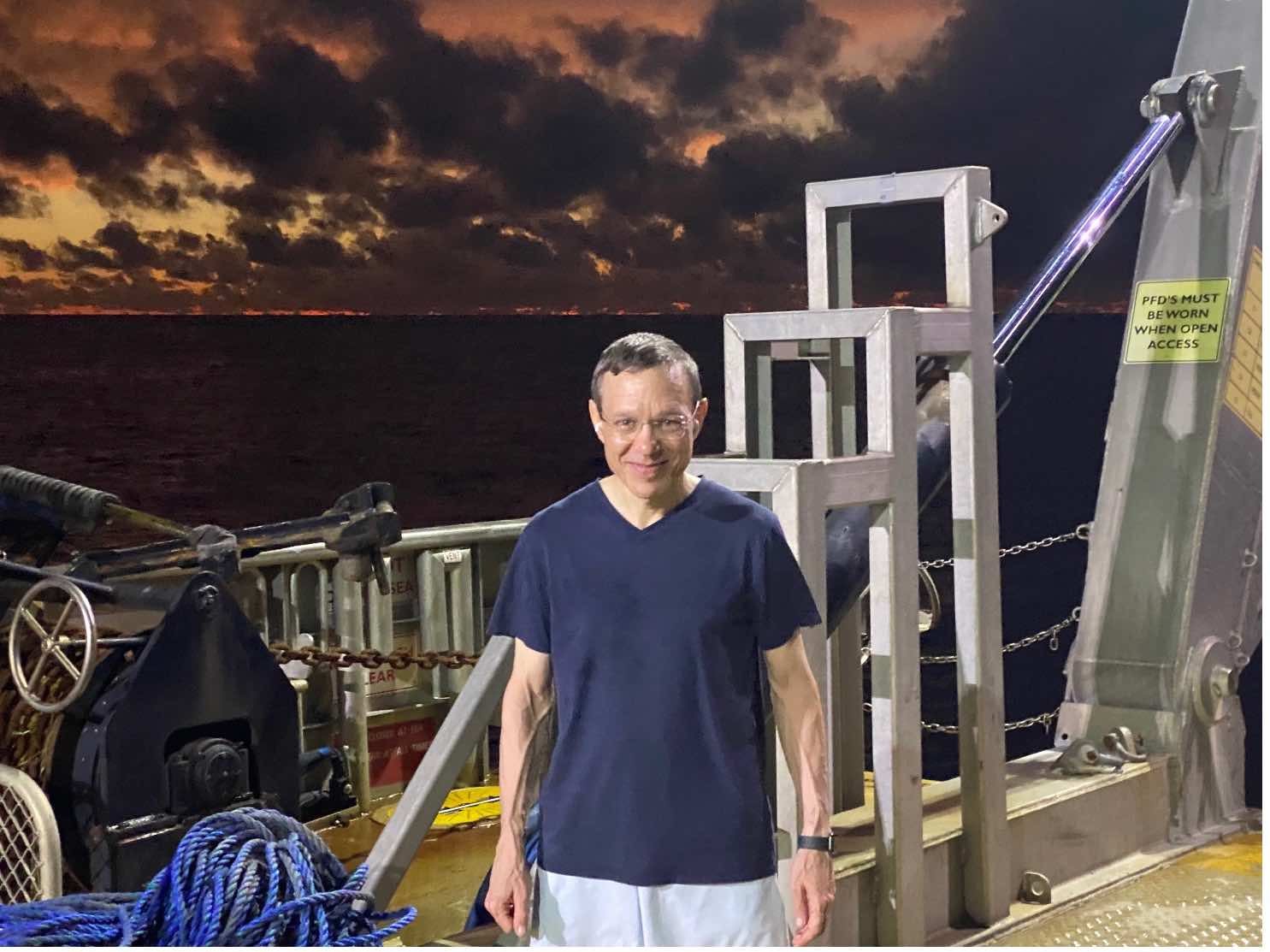

My carry-on luggage en route to the expedition included 20 bars of dark chocolate that I eat every day after my 30-minute jog at sunrise. By the time the expedition is over, I will replace the emptied luggage volume with spherules from the expedition. It is important to avoid eating the returned content by mistake because that would require spherule retrieval in the operating room of Mass General after my return to Boston.
On my way home, I will make a stop at Ryan Weed’s lab on the campus of UC Berkeley, where we will attempt a complete census of the composition of our spherules with state-of-the-art diagnostics. As we were making plans, I told Ryan: “We are on the same boat, both literally and figuratively.”
Run 14 delivered a small seashell coated with magnetite and a pile of black powder, which we vacuumed and delivered to the analysis team.
The spherule count is currently at 17. Champagne will be served at dinner.
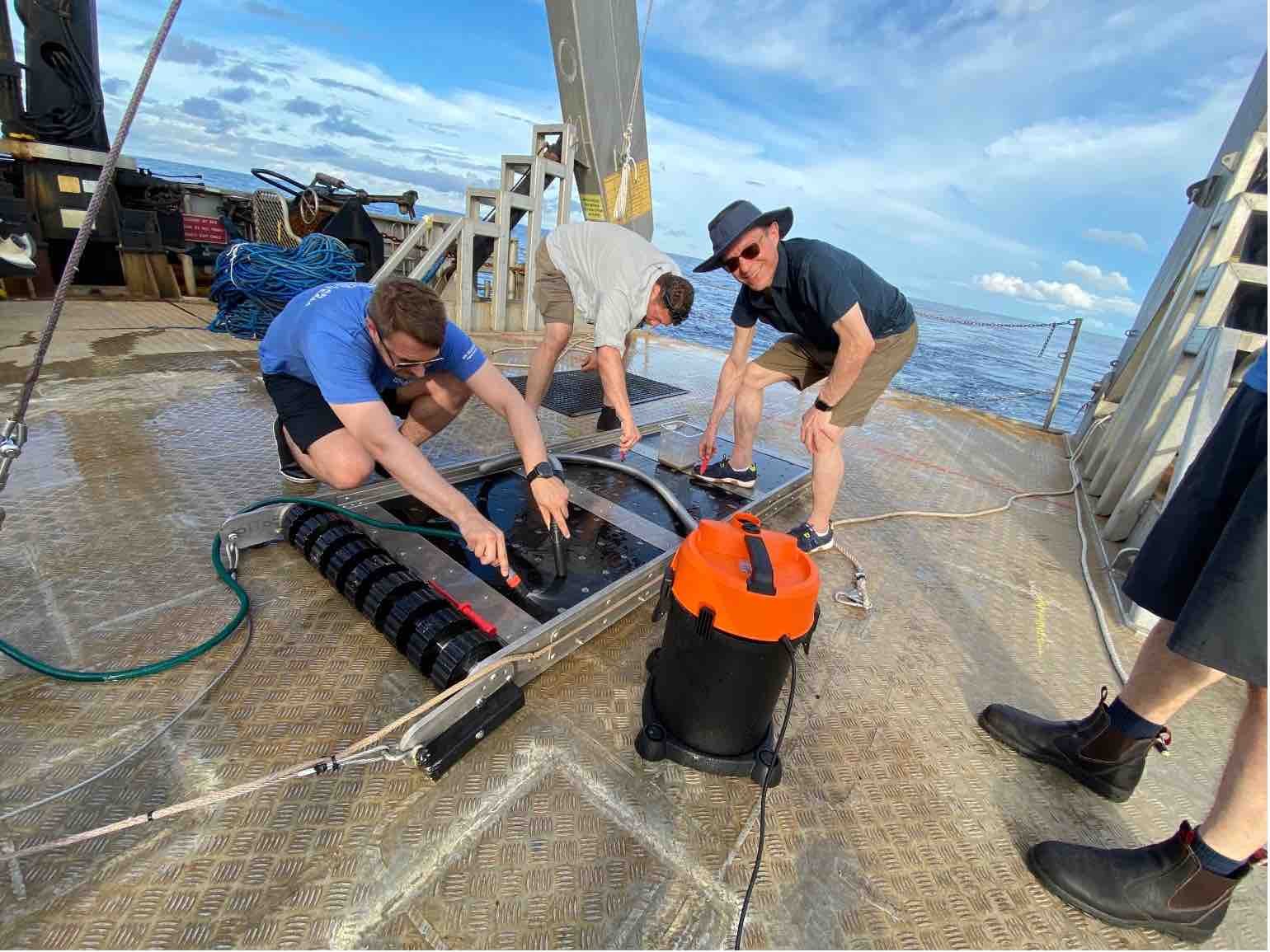

Our next expedition will aim to retrieve any large remnant left over from IM1. At our expedition leadership meeting last evening, we decided to use an analog 30 kHz sonar owned by the senior team members Art Wright and Mike Williamson. This sonar system achieves a resolution of a few centimeters. IM1’s fireball exhibited three flares, potentially related to multiple pieces that broke off the initial object. We should search for these pieces on the ocean floor. Michael Kelly noted: “I love the ocean. When you go out to sea, you never know what you are about the see.”
Art and Mike were about to discard the 30 kHz sonar after decades of use. Now it will be given a new life. I love the idea of rejuvenating an old system to pursue new research at the frontiers of science. Living for two decades in a house that is over a century old taught me to appreciate old-fashioned craftsmanship. That Art Wright, in his eighties, masters the art of always being right is another illustration of the same theme. Art has always been successful in his expeditions, including this one.
After the expedition team retrieved Run 13, a rainbow appeared above Silver Star’s deck. Hours later, we realized that this run delivered the biggest spherule so far with an enhanced abundance of rare elements – often used in semiconductors. Poetically, I was reminded of the words of Judy Garland’s song:
“Somewhere over the rainbow
Skies are blue
And the dreams that you dare to dream
Really do come true.”
Diary of an Interstellar Voyage, Report 26 (June 24, 2023)
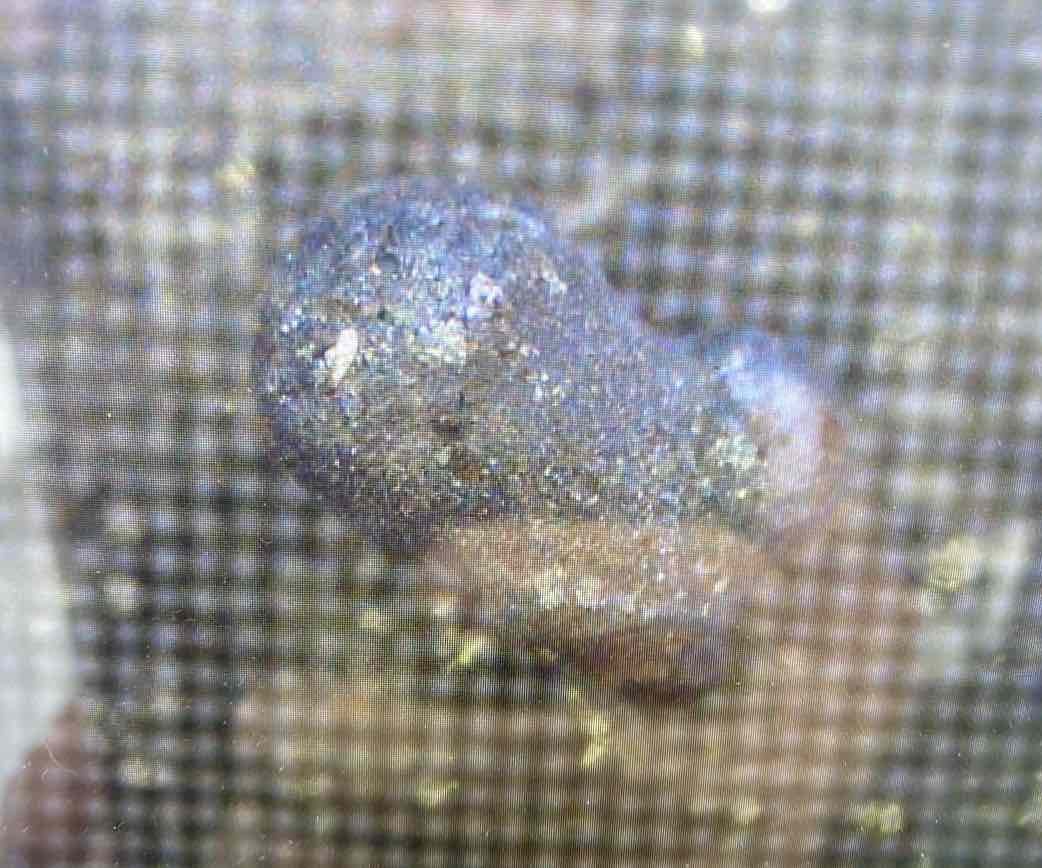

“Two are better than one … for if either of them falls, one can help the other up,” according to Ecclesiastes 4:9-10. Could droplets of molten iron merge during their fall through the air? This was the question that I asked myself following a new delivery from the fireball of the first recognized interstellar meteor, IM1.
The question was triggered when Ryan Weed and Jeff Wynn showed me the largest spherule so far, derived from the latest Run 14 that we collected at 7 AM today. The delivery bed of this baby, our magnetic sled, appeared no different from all previous sled runs. The spherule measuring 700 microns in length, looked like the merger of at least two spheres with the characteristic size of a few hundred microns seen before. A quick test at the X-ray Fluorescence analyzer implied the same composition as previous spherules, dominated by iron but with a surprisingly negligible abundance of nickel.
Both iron and nickel are produced together in supernovae, and natural astrophysical environments do not separate them because of their similar atomic weights. However, humans remove nickel from iron alloys in order to make them stronger. Indeed, the material strength of IM1 was larger than all 272 solar system meteors in the CNEOS catalog of NASA. Could the deficiency of nickel in IM1 be the result of technological design?
By now, we have 19 spherules altogether. The discovery of the new spherule implies a chance of roughly 1 in 19 for two iron droplets to merge just before they solidify. If the two iron droplets merge too early, they would make a single spherical droplet. If they collide after they crust, their surface would not stick.
I immediately performed a back-of-the-envelope calculation. Adopting the crusting temperature to be of order 1000 degrees Kelvin, I estimated that the cooling time of a droplet measuring 300 microns in size through blackbody radiation is tens of seconds. As the droplets move out, they slow down to a terminal speed similar to that of raindrops, resulting from a force balance between friction on air against gravity. Since the friction scales with the area (size squared) and gravity scales with mass (size cubed), larger droplets fall faster and can catch up with smaller droplets. This allows for droplets to stick together just before they develop a crust.
Based on the requirement that 1 out of 19 droplets collide at the right time, I have found that the collision must occur within a hundred meters from IM1.
As we get more statistics on merged spherules relative to the global population of spherules, this model can be refined to constrain the properties of IM1’s fireball.
The most intriguing question remains: was IM1 of natural or technological origin? We hope to find the answer within a week by studying all our spherules with the best instruments that the world has to offer as soon as we return to the US.
It is a great pleasure and privilege to figure things out. There was never a more exciting time in my scientific career than the coming week.
This is the first time in history that humans put their hands on the materials of a large object from outside the solar system. The possibility that an electronic gadget might be lying under our feet is mind-blowing. The heroic effort needed to bring these sub-millimeter spherules from a depth of 2 kilometers to the deck of Silver Star is a testimony to the inspiration that science could bring to our lives.
Science does not need to be boring if we only dare to explore the unknown without pretending to know it in advance.
Many are better than one.
Diary of an Interstellar Voyage, Report 27 (June 25, 2023)
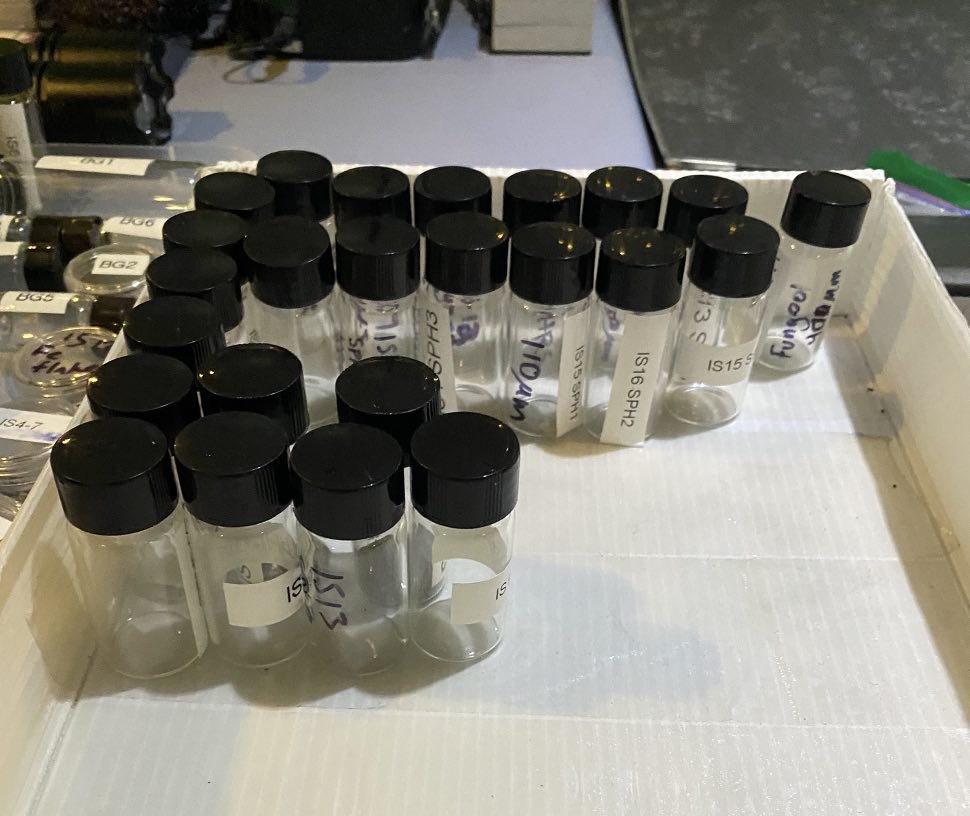

By now, we have 25 spherules from the site of the first recognized interstellar meteor, IM1. They are kept in vials and organized in a plastic container, like babies in their beds in a delivery room.
We nearly doubled the threshold for opening the champagne bottles on Silver Star. I asked Rob McCallum why he brought the bottles on board in the first place, and he replied that he is an optimist. Life is sometimes a self-fulfilling prophecy, so it is better to be an optimist.
Last evening was stormy, so we postponed the celebration to tonight. At its core, this will be a celebration of the scientific method and of the courage to follow it despite all odds. Fishing for milligram-mass babies after they settled to an ocean floor depth of 2 kilometers nearly a decade ago using a 200-kilogram magnetic sled is no small feat.


What counts for our future analysis is the total mass in spherules. This can be estimated by summing up the spherule volumes, which scale as the cube of their individual sizes. Altogether, we have about 30 milligrams of spherule material as of now.
Based on the energy radiated from IM1’s fireball and the measured IM1’s speed, one can infer the mass of material entrained in the fireball to be about 500 kilograms. If we end up retrieving 50 milligrams over the remaining 3 days of the expedition, the total mass we collect would constitute one part in ten million of the fireball’s debris mass.
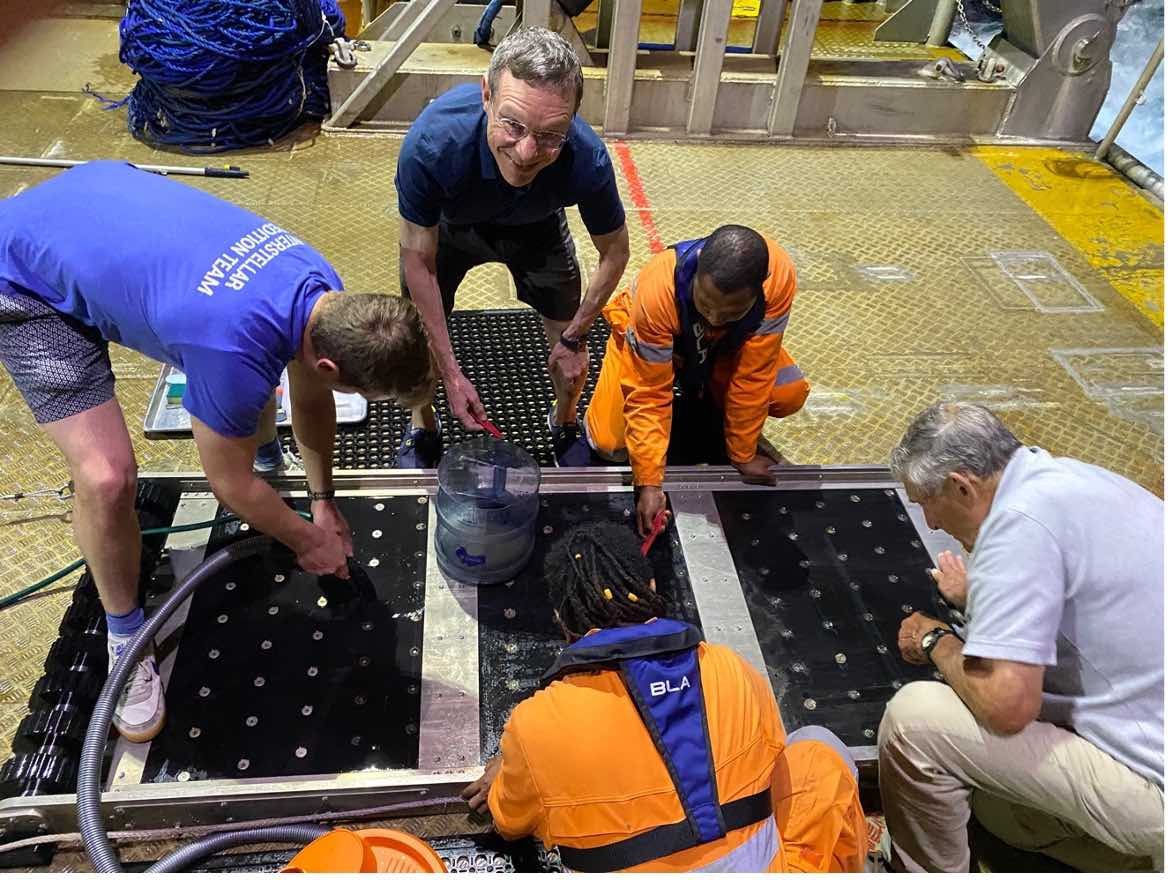

To summarize: a team of two dozen researchers and support staff spent two weeks and 1.5 million dollars on bringing a tenth of a millionth of the debris mass from IM1 to the deck of the ship Silver Star. To paraphrase Frank Sinatra’s song “New York, New York”:
“If I can make it there, I’ll make it anywhere
It’s up to you, Silver Star, Silver Star”
For the history books, we now possess materials out of a package delivered to our doorstep from interstellar space. The distance it traveled is trillions of times farther than the range of Amazon delivery services. We plan to analyze this material thoroughly in the coming weeks and publish the results in peer-reviewed journals.
The success of the Interstellar Expedition constitutes the first opportunity for astronomers to learn about interstellar space by using a microscope rather than a telescope. It opens the door for a new branch of observational astronomy.
From a broader perspective, dedicating our full attention to a speck of mass is not unusual. We need only remember that the total mass in the bodies of the entire human population on Earth is less than a trillionth of the mass of Earth. Yet, we focus most of our daily attention to the whereabouts of this mass.
But there is more to this detective story. If further analysis of the 50 milligrams retrieved from IM1’s site will inform us that IM1’s composition requires a technological origin, we will know that we are not alone. The feeling would be similar to tracing the contact information of a lost family member. Such information may be stored on a tiny piece of paper, but its power is transformative.
It is possible that meteor explorers saw material from interstellar space before us but were not able to figure out its interstellar origin because they did not know that the parent meteor was not bound by gravity to the Sun. IM1 is the first object for which we have that information, as confirmed by the US Space Command at 99.999% confidence.
In our next expedition, we plan to use a 30-kilohertz sonar system to map the ocean floor around IM1’s path in search of any large remnant. If we recover it, we would immediately be able to tell whether it is natural or technological in origin. In the former case, we would learn about the formation sites as well as the ejection processes of interstellar rocks. In the latter case, we would learn about a smarter kid in our cosmic neighborhood that managed to send a package to our doorstep while we are engaged in in-house quarrels and rarely leave our home planet.
Here’s hoping for many more expeditions to retrieve interstellar meteors in the future. Perhaps they will inspire us to reciprocate by sending our own probes to the doorsteps of their senders.
Unlike Elon Musk, who dreams about dying on Mars, I dream about burning up as a meteor in the dark sky of a habitable exoplanet. I will be particularly honored if a curious scientist out there will be imaginative enough to collect milligrams of my ash and examine them under a microscope.
Avi Loeb is the head of the Galileo Project, founding director of Harvard University’s – Black Hole Initiative, director of the Institute for Theory and Computation at the Harvard-Smithsonian Center for Astrophysics, and the former chair of the astronomy department at Harvard University (2011-2020). He chairs the advisory board for the Breakthrough Starshot project, and is a former member of the President’s Council of Advisors on Science and Technology and a former chair of the Board on Physics and Astronomy of the National Academies. He is the bestselling author of “Extraterrestrial: The First Sign of Intelligent Life Beyond Earth” and a co-author of the textbook “Life in the Cosmos,” both published in 2021. His new book, titled “Interstellar,” is scheduled for publication in August 2023.

